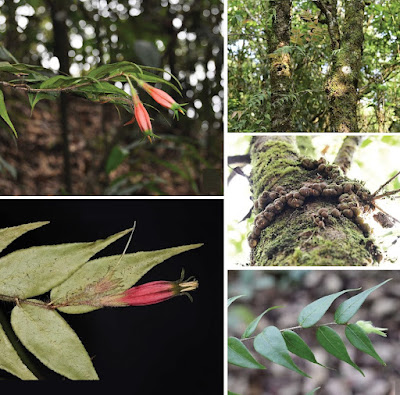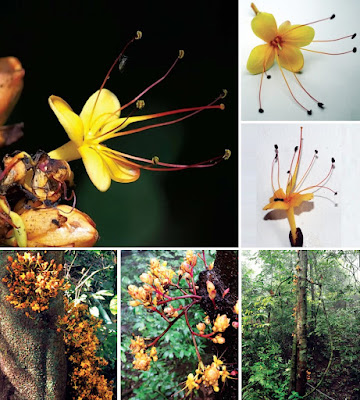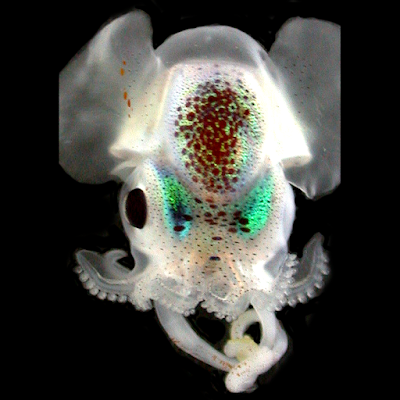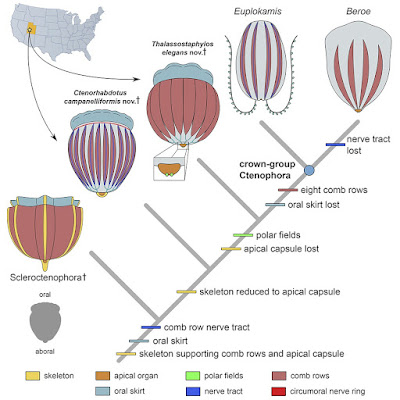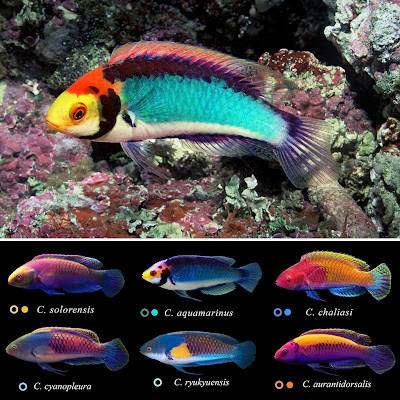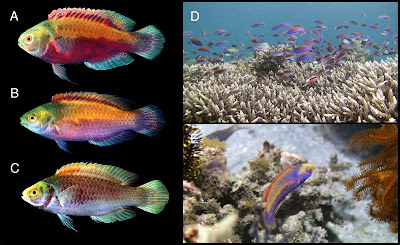[Most Recent Entries] [Calendar View]
Wednesday, August 18th, 2021
| Time | Event | ||
| 9:27a | [Botany • 2021] Agapetes heana (Ericaceae: ser. Longifiles) • A New Species from Yunnan, China
Abstract Agapetes heana Y. H. Tong & J. D. Ya (Ericaceae), a new species from Lüchun Xian, Yunnan Province, China is described and illustrated. This new species is assigned to Agapetes sect. Agapetes ser. Longifiles Airy Shaw. It is closest to A. inopinata Airy Shaw and A. oblonga Craib, but differs in having bead-like tubers, leaf blade with a wholly serrulate margin, subulate and much longer calyx lobes, much larger corollas that are carmine, green at the apex and maroon on angles, and longer stamens without spurs on the back. Keywords: China-Vietnam border, epiphytic, Huanglian Shan, morphology Agapetes heana Y. H. Tong & J. D. Ya, sp. nov. Diagnosis: Agapetes heana is similar to A. inopinata Airy Shaw and A. oblonga Craib in the leaf blade shape, the glandular hairy inflorescence and the filaments that are longer than thecae, but can be distinguished from the latter two by its bead-like tubers (vs. spindle-shaped), leaf blade with a wholly serrulate margin (vs. entire, or inconspicuously serrate beyond middle, or sparsely denticulate at apex), subulate (vs. triangular) and much longer (7–8 mm vs. ca. 1 mm and 1.5–2.0 mm, respectively) calyx lobes, much larger (ca. 3.5 cm vs. ca. 0.8 cm and 1.3–1.9 cm, respectively) corollas that are carmine, green at the apex and maroon on angles (vs. red, crimson or carmine), and longer (ca. 3.6 cm vs. ca. 0.7 cm and 1.0–1.5 cm, respectively) stamens that are without spurs on the back (vs. with 2 obvious short spurs) (Table 1). Etymology: The species epithet is named in honor of Ms. Jiang-Hai He, a local staff in Huanglian Shan National Nature Reserve, who has worked there for almost 30 years and made a big contribution to the knowledge of biodiversity of this nature reserve, and is also the discoverer of this new species. Vernacular name: 疆海树萝卜(Chinese pinyin: Jiāng hăi shù luó bo). Distribution and habitat: This species is currently known only from the type locality, i.e. Huanglian Shan National Nature Reserve, Yunnan, China. Since this locality is very close to the border of China and Vietnam and the habitat is similar and continuous, this species is probably also distributed in Vietnam. It grows on the trunks of trees like Schima wallichii (DC.) Korth. or Lithocarpus sp. under broadleaved forests at an elevation of ca. 1800 m. Yi-Hua Tong, Ying Bai, Jian-Ming Feng and Ji-Dong Ya. 2021. Agapetes heana, A New Species of A. ser. Longifiles (Ericaceae) from Yunnan, China. PhytoKeys. 180: 133-139. DOI: 10.3897/phytokeys.180.69667 | ||
| 12:18p | [Botany • 2021] Saraca thailandica (Leguminosae: Detarioideae) • A New Species from northern Thailand
Abstract Saraca thailandica Pongamornkul, Panyadee & Inta, a new species from northern Thailand, is described and illustrated. This riparian species is distinguishable by its large bracteoles which erect and clasping the calyx tube. It also has 7 stamens which is rarely found in previous known Saraca species. Its flowering and fruiting period is August to September and December to March, respectively, which is different from S. dives and S. thaipingensis. The additional key for Saraca in Thailand is also provided. Saraca thailandica Pongamornkul, Panyadee & Inta sp. nov. Similar to Saraca dives and S. thaipingensis but differed from those by its ± persistent, erect blackish brown in mature bracteoles. The number of stamens is mostly 7. Etymology.— The specific epithet, thailandica, refers to Thailand. Vernacular.— Sok lueang (โสกเหลือง), Ta Na (ตะนา) (Karen). Distribution.— Endemic to Thailand, possibly in Myanmar. Uses.— Seed edible and barks are used as red dye for textile by local people. Wittaya Pongamornkul, Prateep Panyadee, Nattee Muangyen and Angkhana Inta. 2021. Saraca thailandica (Leguminosae-Detarioideae), A New Species from Thailand. THAI JOURNAL OF BOTANY. 13(1); 29–36. qsbg.or.th/bot/journal/showarticle_en.as | ||
| 4:27p | [Invertebrate • 2021] Iridoteuthis merlini & I. lophia • Two New Species of Iridoteuthis (Cephalopoda: Sepiolidae: Heteroteuthinae) from the southwest Pacific, with A Redescription of Stoloteuthis maoria (Dell, 1959)
Abstract Examination of the Stoloteuthis maoria (Dell, 1959) type specimens held in the Museum of New Zealand, Te Papa Tongarewa revealed that the two female paratypes were not conspecific with the S. maoria holotype male and belong to the genus Iridoteuthis Naef, 1912. Based on this finding, Stoloteuthis maoria is redescribed here to properly define the male and female characters. Its occurrence in Australian waters is formally recognised for the first time; the species was known previously only from New Zealand. The Iridoteuthis taxon was found to be new and is described as I. merlini, n. sp. Like S. maoria, this new species occurs in New Zealand and southern Australia. A second new Iridoteuthis from New Zealand was also discovered among the Te Papa collection and is described here as I. lophia, n. sp. The sucker pedicels in males of this latter species are highly and uniquely modified. Keywords: Cephalopoda, Heteroteuthinae, Stoloteuthis, Iridoteuthis, Mollusca Amanda L. Reid. 2021. Two New Species of Iridoteuthis (Cephalopoda: Sepiolidae: Heteroteuthinae) from the southwest Pacific, with A Redescription of Stoloteuthis maoria (Dell, 1959). Zootaxa. 5005(4); 503-537. DOI: 10.11646/zootaxa.5005.4.3 New species of bobtail squid named in honour of Professor Merlin Crossley Naming of Iridoteuthis merlini recognises UNSW DVC’s valued contribution to the Australian Museum. | ||
| 4:28p | [Paleontology • 2021] Cambrian Comb Jellies from Utah illuminate the early Evolution of Nervous and Sensory Systems in Ctenophores
Highlights • Two species of rare fossil ctenophores are described from the Cambrian of Utah • Fossil ctenophores preserve remains of nervous tissue and sensory structures • Neurological structures include an oral nerve ring and giant longitudinal axons • Cambrian ctenophores had a more complex neuroanatomy than living species Summary Ctenophores are a group of predatory macroinvertebrates whose controversial phylogenetic position has prompted several competing hypotheses regarding the evolution of animal organ systems. Although ctenophores date back at least to the Cambrian, they have a poor fossil record due to their gelatinous bodies. Here, we describe two ctenophore species from the Cambrian of Utah, which illuminate the early evolution of nervous and sensory features in the phylum. Thalassostaphylos elegans has 16 comb rows, an oral skirt, and an apical organ with polar fields. Ctenorhabdotus campanelliformis has 24 comb rows, an oral skirt, an apical organ enclosed by a capsule and neurological tissues preserved as carbonaceous films. These are concentrated around the apical organ and ciliated furrows, which connect to a circumoral nerve ring via longitudinal axons. C. campanelliformis deviates from the neuroanatomy of living ctenophores and demonstrates a substantial complexity in the nervous system of Cambrian ctenophores. Keywords: Ctenophora, Marjum Formation, Cambrian, Nervous system, Metazoa Luke A. Parry, Rudy Lerosey-Aubril, James C. Weaver and Javier Ortega-Hernández. 2021. Cambrian Comb Jellies from Utah illuminate the early Evolution of Nervous and Sensory Systems in Ctenophores. iScience. 102943. DOI: 10.1016/j.isci.2021.102943 | ||
| 4:47p | [Ichthyology • 2021] Cirrhilabrus aquamarinus & C. chaliasi • Redescription of Cirrhilabrus solorensis Bleeker, with Description of Two New Species of Fairy Wrasses (Teleostei: Labridae: Cirrhilabrus)
Abstract The labrid fish Cirrhilabrus solorensis was first described in 1853 by Bleeker, based on specimens collected from the Indonesian island of Solor, off the eastern tip of Flores in the Lesser Sunda Islands. Although sufficient at the time, Bleeker's description of the species was brief, resulting in subsequent taxonomic confusion concerning the true identity of this taxon. Presently, the name has been applied to several fishes with notable differences in coloration, particularly in the terminal males. On the basis of additional non-type material and photographic examination of Bleeker's holotype, we redescribe Cirrhilabrus solorensis and resolve the long-standing contention regarding its taxonomic identity. In doing so, we describe two species as new, Cirrhilabrus aquamarinus, new species, on the basis of the holotype and eight paratypes from Sulawesi and the surrounding islands of Banggai and Wakatobi, Indonesia, and Cirrhilabrus chaliasi, new species, described on the basis of the holotype and nine paratypes from Bali, Indonesia. These three species are closely related and, together with C. aurantidorsalis, C. cyanopleura, C. luteovittatus, C. randalli, and C. ryukyuensis, form a complex of species that differ from congeners in having the following combination of characters: caudal fin in males weakly rhomboidal; median fins hyaline with sinuous filigree in both sexes; body with scales edged in inky blue to indigo, their margins often patterned in an argyle motif; and osseus elements that preserve blue to blue-green in alcohol. We briefly discuss the phylogenetic relationships of species in this complex based on results of a companion study detailed elsewhere. Cirrhilabrus solorensis Bleeker, 1853 Solor Fairy Wrasse Etymology.—Named after the type location of the species, Lawajong, Solor Island, Indonesia. Cirrhilabrus aquamarinus, new species Chin-strap Fairy Wrasse Habitat and distribution.— Cirrhilabrus aquamarinus occurs primarily in eastern Sulawesi and the surrounding islands of Banggai and Wakatobi. Rare individuals have also been reported from Banda Neira. The species frequents shallow exposed rubble at depths between 5–20 m (Fig. 5F). Etymology.— The specific epithet is given after the brilliant teal to aquamarine males, an unusual color shared with no other species of Cirrhilabrus. The common name alludes to the chin-strapped appearance formed by the intensely pigmented opercular scales of the males. Cirrhilabrus chaliasi, new species Ruby-headed Fairy Wrasse Habitat and distribution.— Cirrhilabrus chaliasi is known from Bali, Sumbawa, Lombok, Flores, Komodo, and Rinca. It is also reported from Wakatobi, Sulawesi, where it overlaps with C. aquamarinus, though this appears to be a rare distribution record. It frequents the same habitat as other species in its complex, consisting of rubble zones with sporadic coral cover at depths between 8–20 m. Etymology.—The specific epithet is given in honour of Vincent Chalias, a skilled underwater photographer, field biologist, and proponent of coral and fish aquaculture in Bali. He greatly assisted in the description of the new species through his excellent underwater photographs and detailed field observations. Yi-Kai Tea, Gerald R. Allen and Muhammad Dailami. 2021. Redescription of Cirrhilabrus solorensis Bleeker, with Description of Two New Species of Fairy Wrasses (Teleostei: Labridae: Cirrhilabrus). Ichthyology & Herpetology. 109(3); 669-684. DOI: 10.1643/i2021022 |
| << Previous Day |
2021/08/18 [Calendar] |
Next Day >> |
